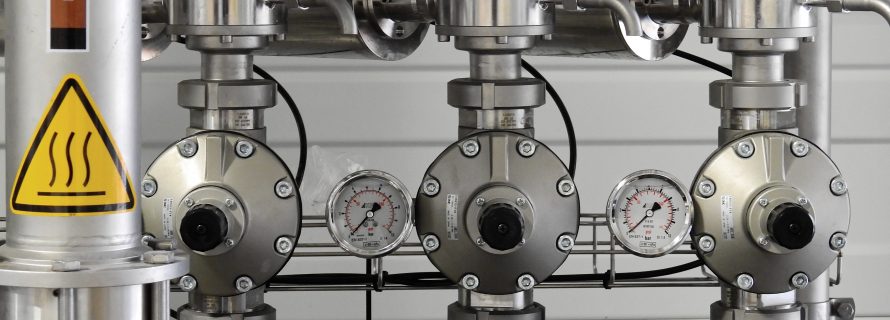What is Backflow and How to Prevent This Home Disaster

Many homeowners are not aware that backflow can cause a lot of damage to their homes. In fact, many people don’t even know what it is! Backflow occurs when untreated water from your kitchen sink or toilet flows backward into the pipes carrying clean drinking water. This is dangerous and could lead to costly repairs as well as serious health risks such as bacterial contamination and E-Coli infection.
Causes of backflow may include:
- Broken washing machine hoses or water supply lines.
- Maintenance crews turn off the water supply to a building for repairs.
- Heavy rains or flooding that can back up sewer lines.
- Sudden changes in water pressure, such as when a fire truck turns on its hoses.
- Malfunctioning or leaking sprinkler systems.
- Washing contaminated items in a regular clothes washer.
- Use of an irrigation system for lawns and gardens on the property where a potable water supply is used.
Prevention Methods
Backflows can be prevented by installing a backflow prevention device. This is a simple and affordable solution that can help to keep your family safe and your home in good condition. If you are not sure if you have a backflow prevention device or need one installed, contact a qualified plumber for assistance with sorting through backflow preventer repair parts and creating a plan.
A backflow prevention device is usually installed on the hose bibb. This simple mechanical device prevents untreated water from flowing back into your clean water supply. These are relatively inexpensive to install and easy for a plumber to put in place. The backflow prevention device cannot work optimally without proper maintenance. Good maintenance is key to preventing backflows. Make sure to keep your kitchen and bathroom sinks clean and free of debris. Regularly check your toilets for leaks, and fix any problems right away. If you have a backyard garden, make sure to keep the hoses disconnected when not in use. A qualified plumber can help you to address any issues with your pipes, which can help to prevent a backflow incident from taking place.
Closing the valves on your plumbing fixtures when you are not using them
If you are not using a particular plumbing fixture (like your kitchen sink), make sure to close the valve on the pipe leading to that fixture. This will help to prevent any backflow from occurring. Closing the valves on your plumbing fixtures will also help to prevent flood damage and property damage. Backflow is a significant problem in older homes because their plumbing systems were not designed to prevent backflow.
By flushing your pipes regularly.
This is not a foolproof solution, but it can help to reduce the chances of backflow occurring. Flushing your pipes regularly will help to keep them clear and free from debris that could lead to a backflow event. Clogging can be a common cause of backflow, so keeping your pipes clean is an important step in preventing this problem. If clogging occurs, it is important to take corrective action as soon as possible to avoid any potential backflow events. Maintain the cleanliness of your water supply system by cleaning sediment from the bottom of your water heater annually and checking piping for leaks continuously. If sediment builds up in your water heater, it can lead to backflow because the sediment will interfere with the operation of the safety device. This could result in untreated water flowing into your clean water supply.
Final Thoughts
In conclusion, backflow occurs when the pressure in your clean water supply is greater than that of your untreated water source. If there is a break in your pipes or plumbing fixtures, this can also lead to backflow. Backflow prevention devices and state laws help to protect you from this dangerous issue. You should take steps to prevent backflow from taking place in your home to ensure the safety of your family and property. Keep your plumbing fixtures closed when you are not using them, and flush your pipes regularly to help reduce the chances of backflow occurring. If you have any concerns about backflow or require a prevention device installed, contact a qualified plumber for assistance.
About The Author: Samantha Higgins is a professional writer with a passion for research, observation, and innovation. She is nurturing a growing family of twin boys in Portland, Oregon with her husband. She loves kayaking and reading creative non-fiction.
Photo by Pixabay from Pexels
- Additions and New Construction
- All Exteriors
- Alterations
- Basements
- Bathrooms
- Customer Service
- Customer Stories
- Decks
- Design & Planning Show
- DIY
- Doors
- Educational Resources
- Extreme Makeover Home Edition
- Fashion Show
- General Remodeling
- Green Living
- Handyman Home Services
- Home Decor
- Home Entertainment
- Home Improvement
- Home Improvements
- How to Tips
- In The Community
- Kitchens
- Off-the-Wall Remodeling Stories
- Remodeling
- Resources
- Roofing
- Siding
- Social Media
- Sunrooms
- Tips & Tricks
- Trends
- Windows

